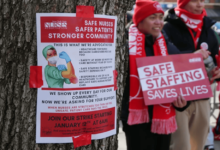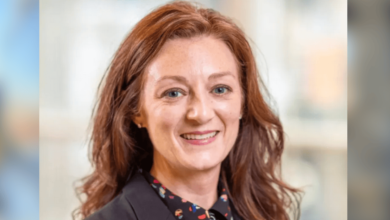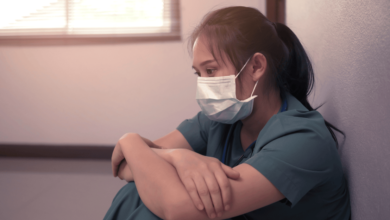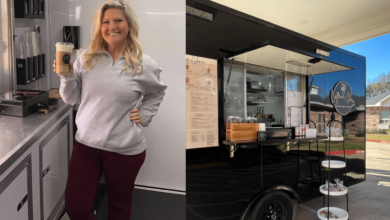Nurses call for improvements to reduce youth suicides

A nurse who lost his son to suicide has called for lived experience to play a bigger role in the design of mental health services.
Simon Jones, a senior registered mental health nurse, spoke alongside other clinicians at a conference last week on youth suicide.
The event, organised by the Royal Society of Medicine (RSM), heard how suicide rates among children and young people had risen over the last decade.
It cited the 2023 National Confidential Inquiry into Suicide and Safety in Mental Health report, which found that 888 people aged under 25 died by suicide in 2020, compared with 696 in 2014.
The event heard from more than a dozen speakers about the impact of suicide, and how they thought care for those at risk of suicide – and those around someone who takes their own life – could be improved.
Mr Jones spoke about the immense impact his 17-year-old son Tim’s suicide had on both his family and the professionals who were involved.
He recalled finding out, while on holiday abroad, that his wife – also a mental health nurse – had discovered their son in their family home in Yorkshire, having taken his own life.
He said: “I thought about all the people who attended the event: seven police officers, the firearms team, the paramedics.
“Some of them knew my son and my family, the undertaker who came I played golf with, and his son grew up with my son. Very quickly you see the wider impact on people [outside of the family].
“The police had a specific role in the maintenance of the scene but then they also have an incredibly distressed person – my wife – there. And there’s a lasting impact on them too.”
He mentioned the ripple effect of suicides, starting from family and friends and spreading to everybody who could have been close to the event.
“The impact of suicide spreads really quickly, not just on the family, but on responders, and that wider base of particularly young people,” he said.
“They have massive groups, and [social media] is a massive and very rapid way of spreading information.”
Mr Jones said losing their son in this way meant he and his wife now had even greater insight into the needs of those impacted by a suicide.
He advocated for lived experience to be listened to more, to help improve care quality and support for families.
“We’ve probably all got colleagues and people we know who have been badly affected by suicide,” he said.
“They’ve got some really valuable insights, like my wife. I’m frustrated by my wife’s [NHS] trust, they haven’t used her despite her offering.”
“Clinicians are usually unprepared for this event”
Steven Voy
He noted that, following an inpatient suicide, families “need to get the right response from the staff”, and that embedding learning from lived experience into practice could help achieve this.
Professor Nav Kapur, professor of psychiatry and population health at the University of Manchester, led on the National Confidential Inquiry into Suicide and Safety in Mental Health report.
He opened the conference with a discussion about the need to find ways to reduce youth suicides – which increased in 2015 and 2017 and had remained high since – as well as an increase in self-harm.
Professor Kapur said that suicide rates themselves did not increase during Covid-19, contrary to popular belief, but that “self-harm and overall mental health [had] gotten worse”.
He pointed to a correlation between suicides and mental disorders and self-harm as evidence that mental health support is a way to help the issue.

Euan Hails
Dr Euan Hails, consultant nurse for child and adult mental health services (CAMHS) at Aneurin Bevan University Health Board, and visiting professor at the University of South Wales, said that, as well as the expansion of the size of his local workforce, a focus on prevention and service integration had made a huge difference to young people in his area.
Explaining further, Dr Hails said that this had involved improving data sharing and communication between CAMHS services, education, social services and local authorities to make sure that young people are neither lost between the cracks of the system, nor pushed between them.
“[In the last few years], we have gone from being a specialist CAMHS service to an integrated one,” he said.
He also said that, alongside this integration focus, the local area had shifted towards a more preventative approach.
Dr Hails said: “We’re focusing on working with ‘tier zero’ patients to try and avoid people coming in for tier two, three, four support because in Wales, we don’t have a lot of beds in CAMHS.”
Other improvements cited by Dr Hails included better co-production of care with young patients.
“Instead of having a young person coming into CAMHS where they’d be assessed by a nurse, and the nurse will tell them: ‘Well, this is what we can do for you’ – my idea was that the person would come in and they’d co-produce the plan, they develop their own treatment journey through CAMHS,” he said.
He mentioned the need to improve the transition from CAMHS to adult mental health services, and said that in Wales a 16-25-year-old service was being considered.
As well as discussing how to improve care for patients and families, experts at the conference spoke about the impact on the workforce when a patient dies by suicide.
Registered nurse and psychiatrist, and emeritus professor at King’s College London, Professor Kevin Gournay, said a patient suicide could lead to nurses changing their practice, and not always in a helpful way.
In an interview with Nursing Times, Professor Gournay said: “[The impact] on the professionals and families and is enormous.
“Some [nurses] on a team that’s had a suicide will be much more risk averse.
“When you’re looking after a patient in the community, one thing you’ll do is look for signs of improvement. You try to get people back into everyday life.
“The problem with being risk averse is you carry on treating them as a high-risk individual, which is more likely to happen when you’ve had a suicide in the team.”
Dr Steven Voy, consultant child and adolescent psychiatrist at NHS Fife, told the conference that this risk aversion could add pressure on already stretched services, on top of the impact the suicide itself had on the retention of staff.

Steven Voy
“Clinicians are usually unprepared for this event,” said Dr Voy.
“That then leads to the anguish that can be associated with it. Some [nurses] go on to need secondary [mental health] care.
“This can be a cause of attrition of mental health staff with a negative impact on service provision and clinical performance.
“Risk averse practice, delayed discharges and keeping patients in longer than they need to leads to pressure on services too.”
Dr Emma Wadey, national lead for mental health nursing at NHS England, spoke at the end of the conference about her work on preventing suicide of nurses themselves.
“[At NHS England], I’ve made it my business to lead across England about suicide prevention in health care staff and particularly nurses,” said Dr Wadey.
“Female nurses have a higher rate of suicide than any other [healthcare] professional.

Emma Wadey
“So that piece is now in the national strategy for suicide prevention, and […] we are the only country in England in the world to have included healthcare [professional] suicide within our national strategy.”
She referred to an ongoing scheme to improve occupational health and clinical supervision access for nurses working in areas such as primary care, prisons and schools.
“[Nurses can] have a psychologically safe space to talk about how work impacts on them,” Dr Wadey continued.
“That is really important when we know that we are experiencing and exposed to trauma every day.”
She said she had also commissioned a study of all mental health nursing students looking at the impact of exposure to suicide and self-harm during their training.







